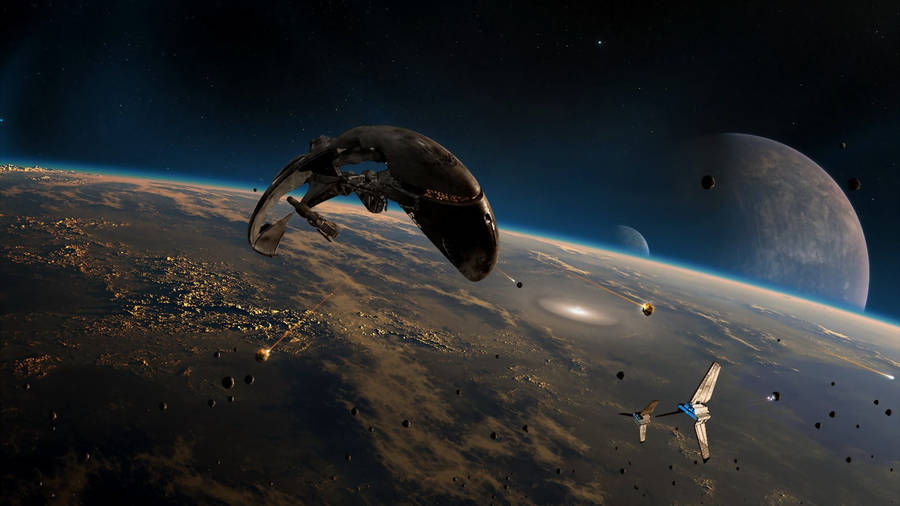Beautiful Space Wallpapers bIography
source(google.com.pk)
Space is the boundless three-dimensional extent in which objects and events have relative position and direction. Physical space is often conceived in three linear dimensions, although modern physicists usually consider it, with time, to be part of a boundless four-dimensional continuum known as spacetime. In mathematics, "spaces" are examined with different numbers of dimensions and with different underlying structures. The concept of space is considered to be of fundamental importance to an understanding of the physical universe. However, disagreement continues between philosophers over whether it is itself an entity, a relationship between entities, or part of a conceptual framework.
Debates concerning the nature, essence and the mode of existence of space date back to antiquity; namely, to treatises like the Timaeus of Plato, or Socrates in his reflections on what the Greeks called khora (i.e. "space"), or in the Physics of Aristotle (Book IV, Delta) in the definition of topos (i.e. place), or even in the later "geometrical conception of place" as "space qua extension" in the Discourse on Place (Qawl fi al-Makan) of the 11th-century Arab polymath Alhazen. Many of these classical philosophical questions were discussed in the Renaissance and then reformulated in the 17th century, particularly during the early development of classical mechanics. In Isaac Newton's view, space was absolute—in the sense that it existed permanently and independently of whether there were any matter in the space. Other natural philosophers, notably Gottfried Leibniz, thought instead that space was in fact a collection of relations between objects, given by their distance and direction from one another. In the 18th century, the philosopher and theologian George Berkeley attempted to refute the "visibility of spatial depth" in his Essay Towards a New Theory of Vision. Later, the metaphysician Immanuel Kant said neither space nor time can be empirically perceived, they are elements of a systematic framework that humans use to structure all experiences. Kant referred to "space" in his Critique of Pure Reason as being: a subjective "pure a priori form of intuition", hence it is an unavoidable contribution of our human faculties.
In the 19th and 20th centuries mathematicians began to examine non-Euclidean geometries, in which space can be said to be curved, rather than flat. According to Albert Einstein's theory of general relativity, space around gravitational fields deviates from Euclidean space.Experimental tests of general relativity have confirmed that non-Euclidean space provides a better model for the shape of space.
In modern mathematics spaces are defined as sets with some added structure. They are frequently described as different types of manifolds, which are spaces that locally approximate to Euclidean space, and where the properties are defined largely on local connectedness of points that lie on the manifold. There are however, many diverse mathematical objects that are called spaces. For example, vector spaces such as function spaces may have infinite numbers of independent dimensions and a notion of distance very different. Space is one of the few fundamental quantities in physics, meaning that it cannot be defined via other quantities because nothing more fundamental is known at the present. On the other hand, it can be related to other fundamental quantities. Thus, similar to other fundamental quantities (like time and mass), space can be explored via measurement and experiment.
Beautiful Space Wallpapers

Beautiful Space Wallpapers

Beautiful Space Wallpapers

Beautiful Space Wallpapers

Beautiful Space Wallpapers

Beautiful Space Wallpapers

Beautiful Space Wallpapers

Beautiful Space Wallpapers

Beautiful Space Wallpapers

Beautiful Space Wallpapers

100+ Space Background Pictures | Download Free Images
ReplyDelete